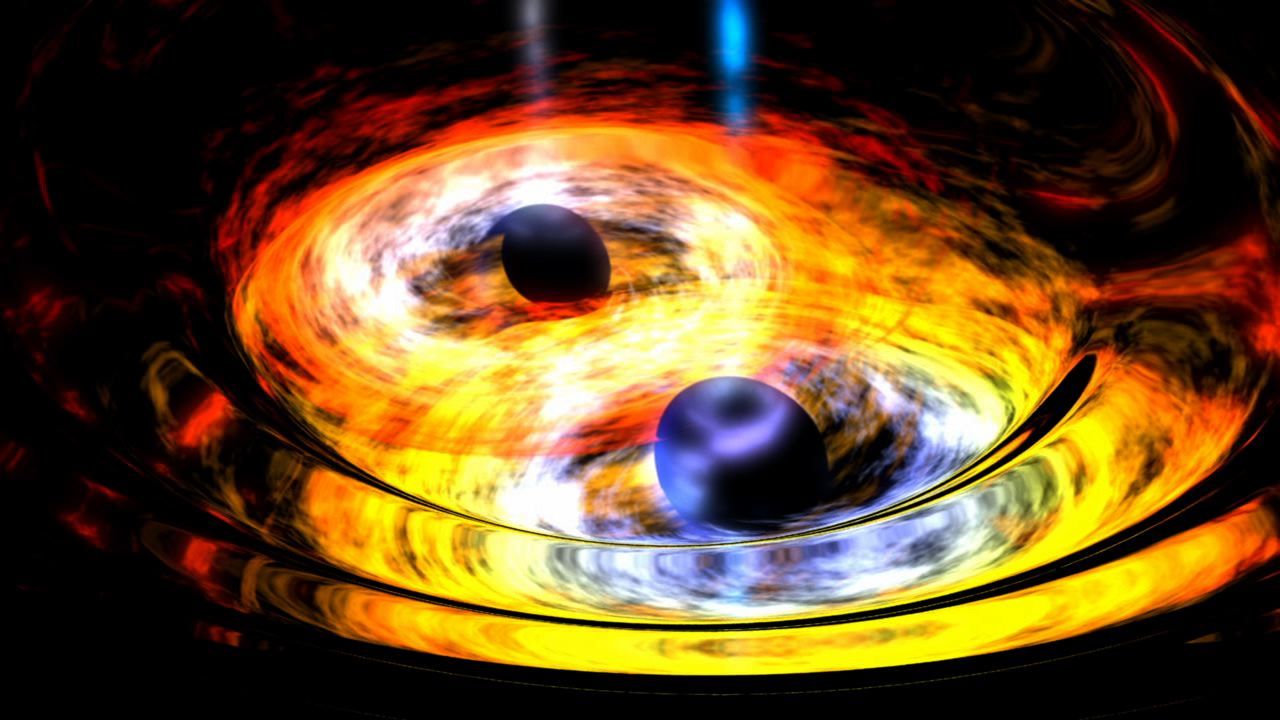
Astrophysicists think we'll be able to detect collisions of supermassive black holes—theoretically each containing as much as billions of times the amount of matter as our sun—within just the next ten years. That's the prediction scientists are making in a new paper published in the journal Nature Astronomy.
This isn't the sort of event we'll be able to hear with the super-sensitive long-distant hearing devices, the Laser Interferometer Gravitational-Wave Observatory (LIGO) that has so far spotted four examples of black holes merging since February 2016. All of those events have been of much smaller black holes, of more like 30 times the size of our sun.
But the mechanics at play to create gravitational waves during a supermassive black hole merger will work in more or less the same way as these miniature collisions.
Supermassive black holes lurk at the centers of galaxies, and when those galaxies collide, eventually their supermassive black holes will first slowly circle each other spiraling inward like water down a drain, then eventually merge as well. Throughout that dance, their stunningly huge masses warp gravity in their neighborhood, creating gravitational waves rippling out from the collision site.
Those gravitational waves will be at much too deep a pitch for the LIGO detectors and their new European counterpart Virgo to pick up—but scientists should still be able to measure them. That's because these waves should interfere with a very special type of star-like object called a pulsar.
Pulsars twinkle at a set rate that scientists can measure because they emit two jets of radio waves in opposite directions while itself spinning along a different plane, causing the jets to spin like a spotlight. But gravitational waves send shivers out across the universe, causing the distance between Earth and a pulsar to wobble a little, which scientists should be able to see in the pulsar's signature.
Scientists already have a host of instruments staring at pulsars, including the Parkes Pulsar Timing Array in Australia, the North American Nanohertz Observatory for Gravitational Waves, and the European Pulsar Timing Array.
Based on estimates of the number of supermassive black holes and the number of pulsars scientists can use as indicators, the new paper estimates scientists should spot the touch of a collision's gravitational waves within ten years. If we don't, the authors argue, it could mean we don't actually understand what's going on in the universe around us as well as we think we do. One possibility would be that the black holes get stuck and slow down so much that it will take billions of years for them to finally collide.
But if all goes well, the team even has a prediction of where the collision is most likely to take place: In a neighborhood like the Sombrero Galaxy, where a slightly less massive supermassive black hole means the collision would happen more slowly, leaving scientists more time to spot its signature.
All that's left to do now is to let time take its course.
Uncommon Knowledge
Newsweek is committed to challenging conventional wisdom and finding connections in the search for common ground.
Newsweek is committed to challenging conventional wisdom and finding connections in the search for common ground.
About the writer
Meghan Bartels is a science journalist based in New York City who covers the science happening on the surface of ... Read more
To read how Newsweek uses AI as a newsroom tool, Click here.








